Content marketing has been growing exponentially in popularity and there are now over 500 million blogs on the Internet (1.6 billion websites, but only half a billion identify as blogs). As with any great marketing channel, content marketing has become saturated and is less effective in 2019 than it was ten years ago.
So should we just give up now? Well, if you don’t leverage content marketing you will not only be missing out on a lot of leads, but you will also be swallowed up by the competition that knows how to leverage it effectively.
Even though the days of content mills are long gone, there are other, much more valuable ways to leverage content marketing. We are going to give you some insider tips that not only prove that content marketing still works, but that it continues to be one of the strongest strategies to drive conversions.
In this post, I’ve provided 30 effective and actionable tips to not only get the most out of your content marketing, but to take your performance up to the next level.
1) Check for Grammatical Errors
Not only do you look a little silly to your potential customers if you can’t spell (particularly with spellcheck on every platform from Word and Google docs to WordPress), but you may also see a drop in rankings. Google wants to deliver authoritative results and nothing makes you look less authoritative than having misspellings and grammatical errors throughout your content.
But what if you’re not a writer? Try a content writing service like EssayGeeks. If you’re a decent writer but just need some help to improve, install Grammarly, a tool that will help you with everything from emails to blog writing:
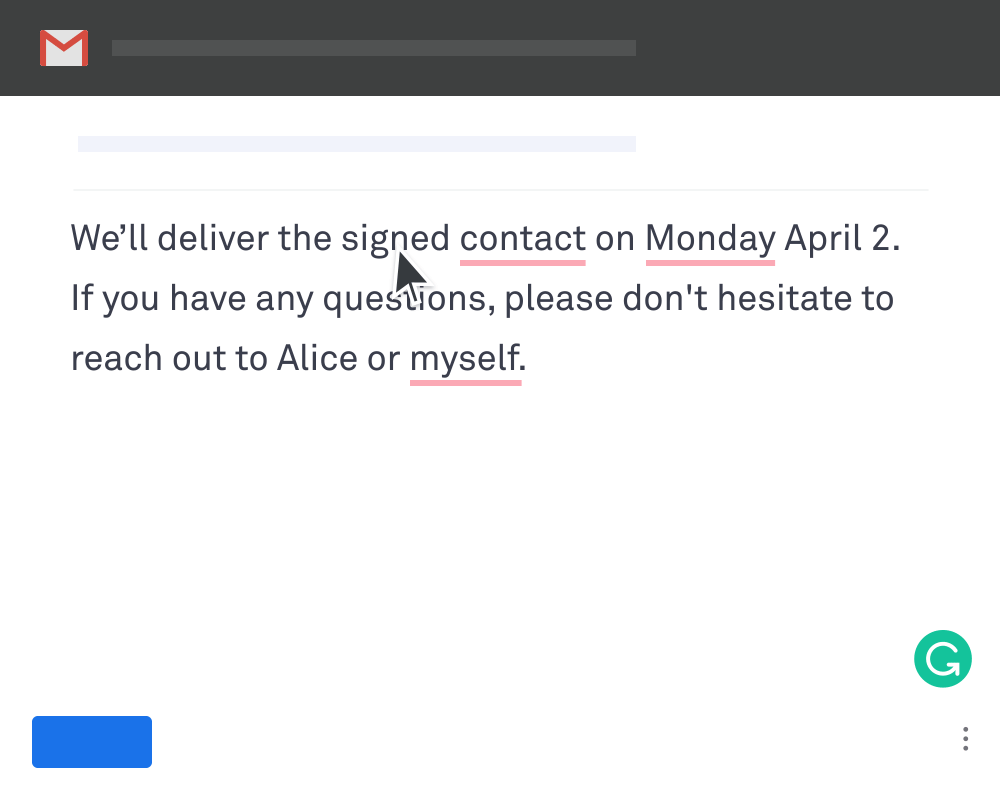
Dive Deeper: 10 Ways to Generate Topics and Write High-Ranking Blog Posts
2) Write Relevant and Actionable Content
In order to be a great marketer and business owner, you must first understand your customer. Regardless of the niche you are in, you should know your customer’s problems and pain points like the back of your hand.
And to truly develop a piece of content around your customer’s pain point, make sure that it is actionable. Are you giving them the specific steps and tools they need? Could you take this piece of content and replicate the steps? If you don’t think you could carry out the advice in the article, you haven’t finished it yet.
Dive Deeper: 10 Ways to Generate Topics and Write High-Ranking Blog Posts
3) Develop Content Marketing Goals
A shocking statistic from a study done by CoSchedule shows that 26% of marketers don’t even have a marketing goal. Of those that do, only about half are meeting their goals fairly often.

Noah Kagan of AppSumo often speaks about having one company goal. So before completing any task throughout the day, he asks: “Is this task going to get us closer to our company goal?” If the answer is no, don’t do it.
Now that you have the company goal in mind, what are you trying to accomplish by creating and promoting your content? Is it brand awareness? More sales in the next quarter? From there, you can pick a topic and map out the piece.
Dive Deeper: Creating Google Analytics Funnels and Goals: A Step-by-Step Guide
4) Offer FREE Value through Your Content
Do you know what most of today’s consumers want? They want to hear the word “free.” Think about how many of your friends like to brag about the great bargain they just got. The same goes for your customers. While most marketers and brands are asking for money in return, you can offer free tools and high-quality information to build your brand.
If Neil Patel can provide an entire tool for free (Ubersuggest, a keyword research tool – and not some cheap thing that barely does its job!), that’s a pretty good indication that there is an ROI on free value:
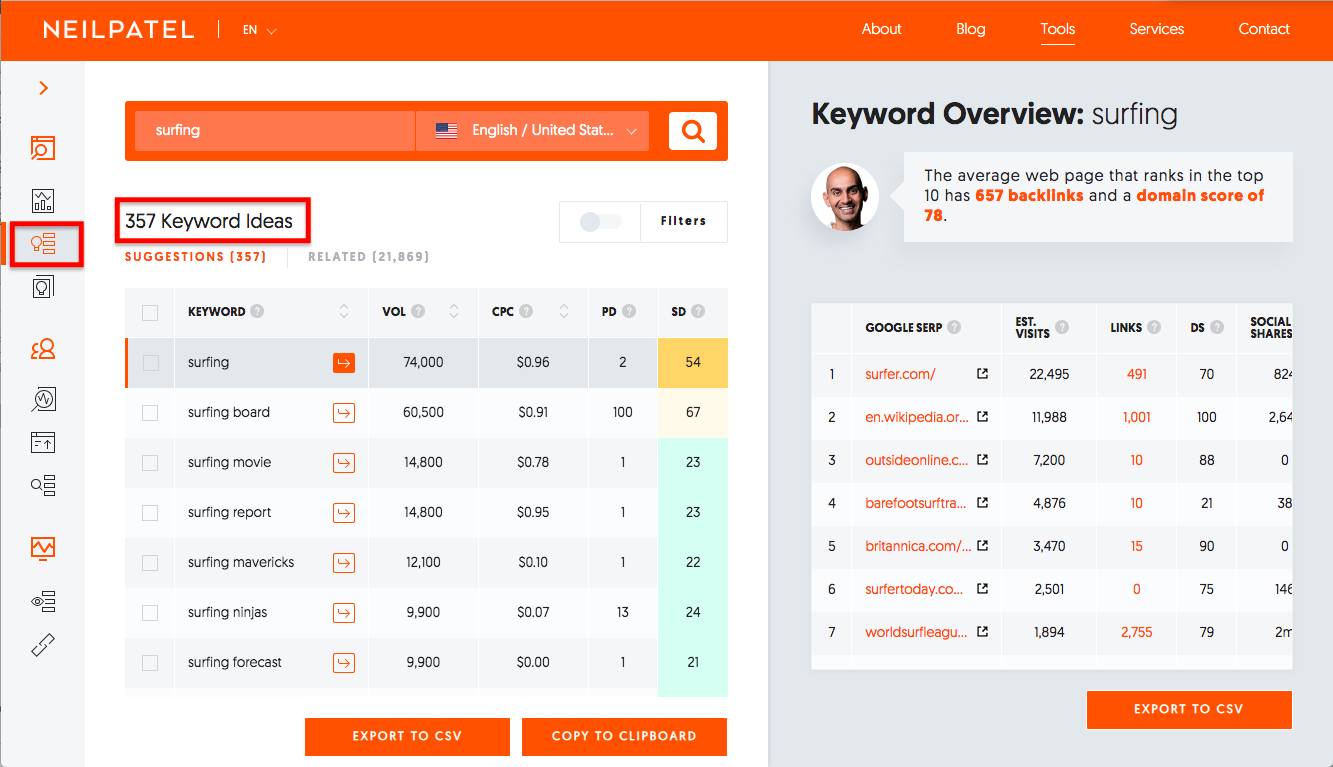
Consider offering your own valuable content (like an in-depth, downloadable guide) for free or building your own useful tool, like Neil did. We created, a tool that lets you to test the effectiveness of each page (or groups of pages) to increase your organic traffic without the hassle of building links or writing more content.
Dive Deeper: Why Neil Patel Pays $30,000 for Content & Gives it Away For Free [podcast]
5) Use Content to Drive Leads into Your Sales Funnel
Content marketing is one of the most crucial aspects of a sales funnel. From pulling customers into that initial stage (TOFU) with specific content pieces to getting them to click the “buy” button on the sales page, content is everything.
Start by creating amazing content that drives awareness, whether that is a video, blog post or infographic. Within this content, make sure that you are enticing the reader to move into the next stage of the funnel (MOFU). This could be by asking for an email address before providing access to gated content. Continue to be aware of how your prospect is feeling at each stage in your marketing funnel and adjust your copy to reflect that:
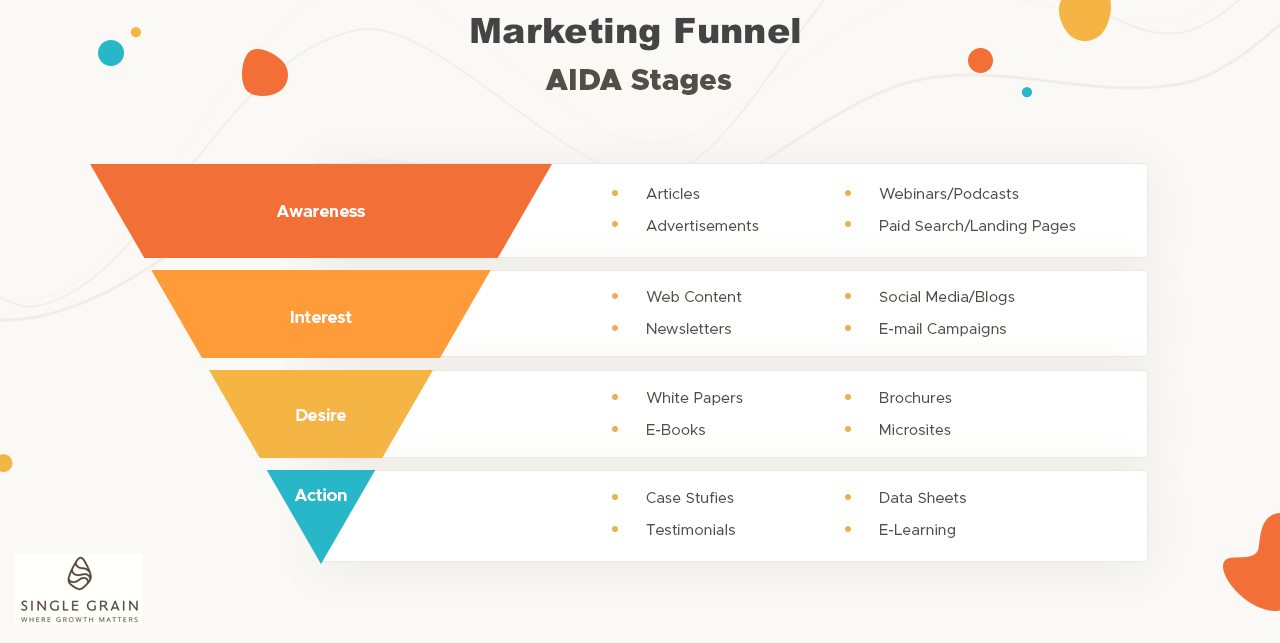
Dive Deeper: How to Choose the Right Content for Each Stage of the Marketing Funnel
6) Keep in Mind that Longer Content Performs Better
Longer content gets more attention from both Google and people:
You’ve probably heard this before., but what you might not have heard is that higher rankings also increase conversion rates. A study on Quicksprout showed that when they A/B tested landing pages, the longer ones not only performed better, but also had more qualified leads.
So why does long form content work better? More often than not, a blog post of around 2,500 words will:
- Capture attention and offer more relevant information
- Incorporate more keywords and SEO optimization
- Develop authority of the website that published it
Dive Deeper: Do You Really Need to Write 1,890-Word Blog Posts to Rank on Page 1?
7) Understand Your Target Audience (and Buyer Persona)
Any marketing campaign, whether it’s content marketing, social marketing or search engine marketing, needs to be directed towards a specific target audience. Although you may wish that every single person in the world was your ideal customer, that’s rarely the case. Make sure that you understand whom you’re creating content for – and figure that out before trying to sell anything.
Failing to understand your ideal target buyer (or buyer persona, as seen in the image below) is a serious mistake that will result in a lot of wasted energy, time and money:
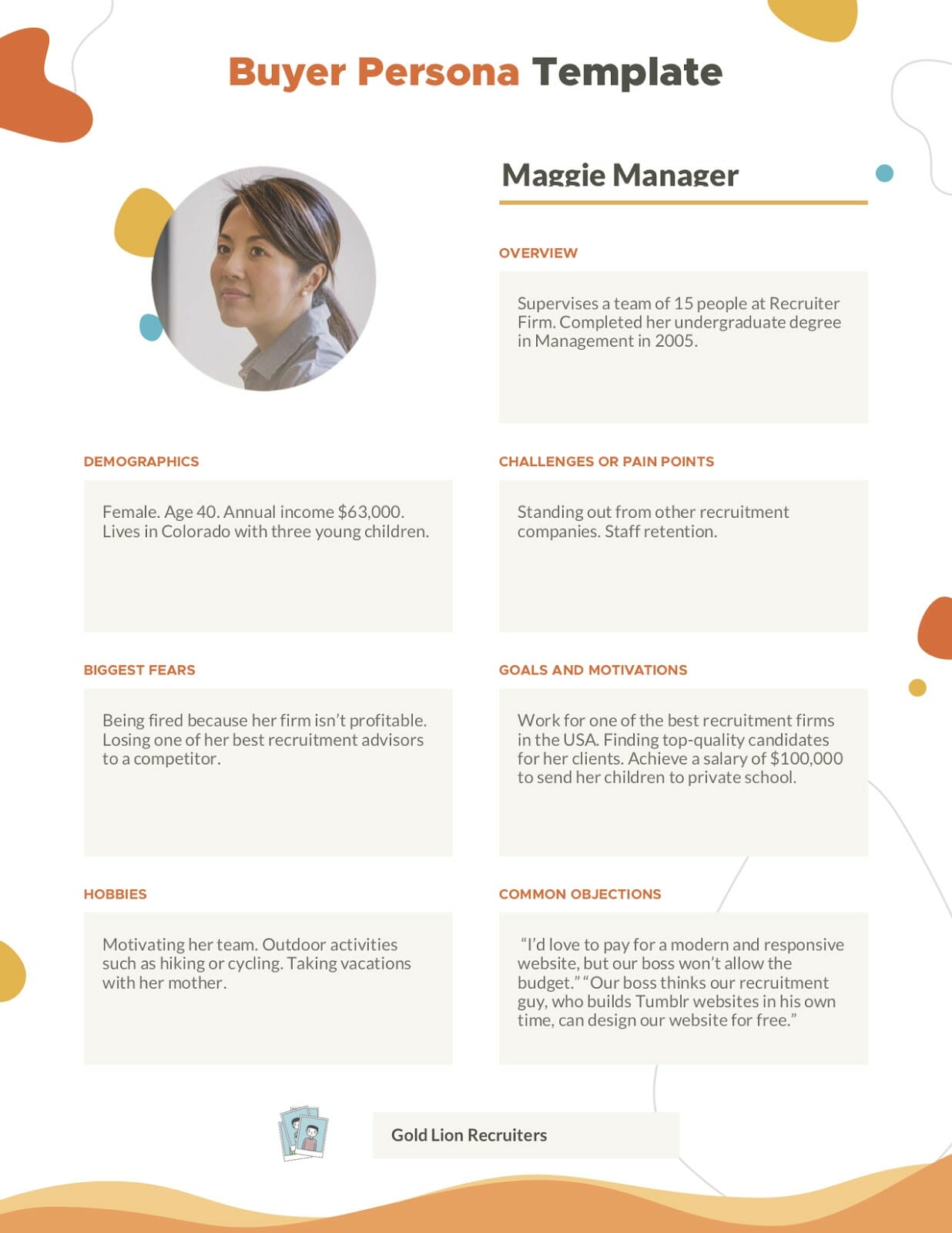
Dive Deeper: The Complete Guide to Developing and Using Buyer Personas
8) Gain Authority Links with Guest Posting
Guest posting is an amazing way to get more people familiar with your brand. Think about it. If your friend Bill introduces you to his friend Sally, you’re no longer a complete stranger to Sally. She will probably make a lot of positive assumptions about you based solely on the fact that you are Bill’s friend.
Guest posting works in a similar way. You get to tap into the host blog’s whole new network and promote your brand. If they have a strong and loyal following, you should get a pretty good ROI. This is a super easy and cheap way to get lots of prequalified eyes to your website.
Dive Deeper: 5 Types of Guest-Post Content that Support Your Link-Building Efforts
9) Optimize all Your Headlines
David Ogilvy once said:
“On average, five times as many people read the headline as read the body copy. When you have written your headline, you have spent eighty cents out of your dollar.”
But if you never get anyone to click through your headlines to the post, it won’t matter how great your content is.
Click-through rate (CTR) is a direct ranking factor. If Google notices that people aren’t clicking through, you will begin to see a drop in rankings. Keep in mind that you should be optimizing for user intent before search engines. While it is good to include your main keyword in the title, don’t over optimize either.
If you get stuck coming up with an attention-grabbing headline for your article, check out our post on this subject:
Dive Deeper: How to Write Hero Headlines to Skyrocket Click-Through Rates
10) Offer Exclusive Content to Your Email List
With an ROI of 4,400%, email is still one of the most powerful marketing channels that you should be leveraging, because the people on your list are already your fan.
If you aren’t already offering exclusive content to your subscribers, you’re missing out. People love to feel special and when you tell them that only they (the subscribers) are going to receive the “best of the best” information, they’re more likely to opt in.
If you want to take it up another level, try segmenting your emails. A study done by Campaign Institute showed that segmented campaigns produced a 760% increase in revenue. That added level of personalization goes a long way.

Dive Deeper: How to Use Personalization to Increase the Impact of Email Marketing
11) Maintain a Content Calendar
Content marketing without consistency is just like a fitness schedule that is not performed on a regular basis. Both cases will bring fewer results.
In order to build your brand’s reputation, you should create and share valuable and qualitative content consistently, and the best way to organize this somewhat daunting task is to use an editorial calendar:
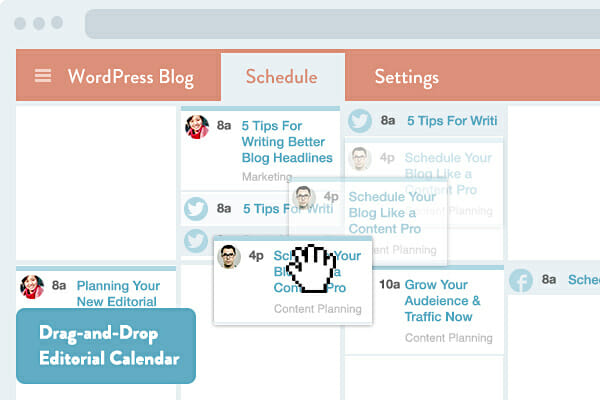
If you don’t have a huge team or budget, you can do this with a simple Excel or Sheets spreadsheet. However, there are a number of tools available, such as:
- CoSchedule – editorial calendar
- WordPress – editorial calendar
- Asana – project management and editorial calendar
- Trello – project management tool
- MeetEdgar – social media post scheduler
- Buffer – social media automation tool
Dive Deeper: How to Produce High-Quality Content Consistently and Not Waste Your Money
12) Make Social Sharing on Your Blog Easy
This is one of the easiest hacks to implement. Add visually attractive (and prominently placed) social sharing buttons throughout your website pages and blog posts. Use an easy, one-click sharing button, because if it’s time-consuming or otherwise difficult, nobody will use it.
On the Single Grain blog, each post has a floating social sharing column that follows you as you scroll down, so it’s always right there:

Another idea is that when your readers finish an article, create a CTA (call-to-action) that asks them to share your content on social media.
Another great option to make social sharing easy for the reader is to include Tweetable quotes when possible (make sure they’re actually worth quoting, though!), like this one from 6 Actionable SEO Strategies for Exceptional Customer Service:

Dive Deeper: How to Use Social Media to Substantially Improve Your SEO
13) Go Omni Channel
You’ve already spent a whole lot of time making an amazing video – but if you leave it as just a video, you’re missing out on a lot of opportunities that only require a little extra work. Take advantage of the one, great piece of content you created (the “seed”) to easily create a handful of others (the “sprouts”) by using the Content Sprout Method.
So instead of creating a million different pieces of content in addition to that video you made, you can hire someone to transcribe the video and turn it into a blog post; you can use the audio and publish a podcast episode; you can compile the stats or the step-by-step process into an infographic. And so on.
The reason this works so well is because everyone has a preferred medium in which they consume content, so if one person doesn’t enjoy reading long blog posts, they can easily consume the same info via podcast to listen to on their way to work.
Dive Deeper: Omnichannel Marketing: Using the Content Sprout Method to Overcome Info Overload
14) Know What Form of Content Each Social Platform Is Best For
Each social media channel varies slightly in their preferred form of content. For example, YouTube is obviously the best place for video content, Twitter is great for a one-sentence teaser and a link back to your blog, Instagram and Pinterest are great for visual content, etc. Pinterest is also a great holiday-themed platform:
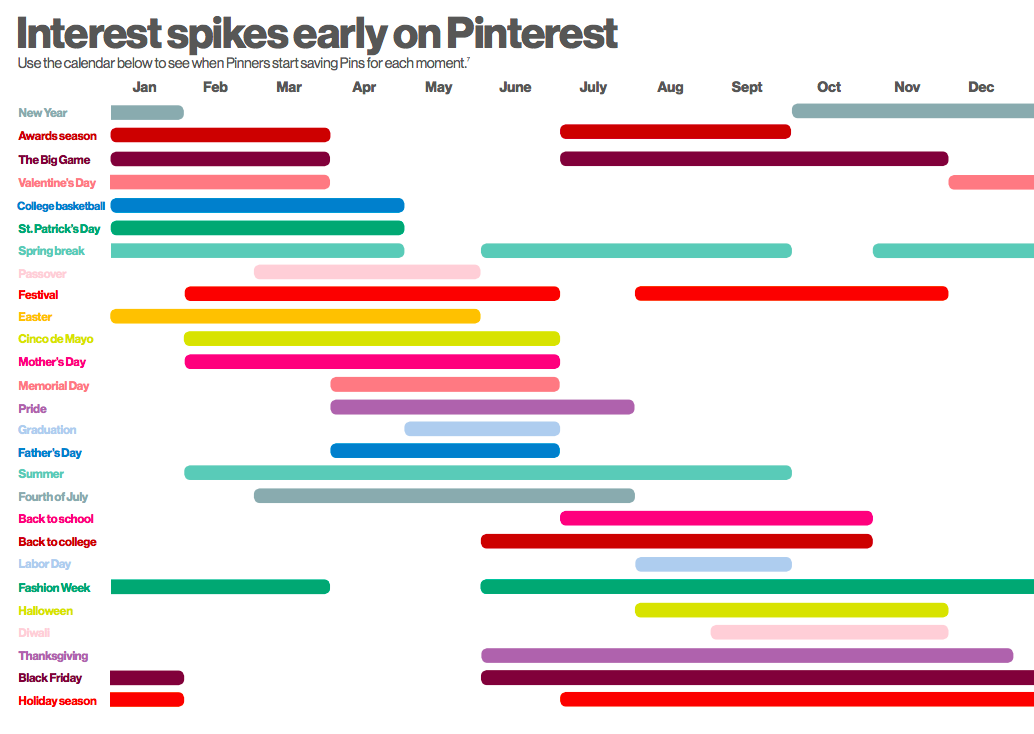
Dive Deeper: The Beginner’s Guide to Crafting a Highly Effective Social Media Strategy in 2019
15) Post to Medium
This is a tactic that is often overlooked, but is a very powerful way to get more traffic to your site. Medium is free to post on and provides a wealth of information on a variety of topics:

To optimize for the highest CTR to your website, only post the first several paragraphs of your article and make the reader click to your website to read the rest. If you want to really take it to the next level, make sure that you optimize your dated posts – that means refreshing old ideas, images/screenshots and stats (and, of course, all links) to make it more relevant to the current year.
In addition, check your keywords. If you are ranking for keyword topics that are relevant but not mentioned in the content, consider adding a section that explains those topics.
Dive Deeper: The Advanced Guide to Medium Marketing
16) Update Old Content
Speaking of optimizing your older posts…. In this rapidly changing industry, a year or two is all it takes for your content to become outdated. Or it might be ranking for keywords that you were not initially targeting. Rather than going through the hassle of writing an entirely new post, a better idea is to just update it. That way you don’t lose any SEO juice on the original URL.
Updating older, well-performing content involves:
- Performing some research to see what has changed on the topic
- Rewriting parts of the article to reflect these updates
- Citing new, authoritative sources
- Making sure that all the links are working (and updated – generally you don’t want to link to a source that is more than a 1-2 years old)
- Replacing any obviously outdated images
- Refreshing the intro and conclusion
How do you know which blog posts to update? You should conduct a thorough content audit on an annual basis to discover any insights into your blog and content marketing strategy. Click the link below to learn how to do this.
Dive Deeper: The Step-by-Step Guide to Conducting a Content Audit
17) Your Content + Influencer’s Quote = Positive Results
Approach an influencer whom you believe would be interested in your content, brand’s values or ideas: 
Within five years, influencer marketing is positioned to become a $5-10 billion industry. And the companies and brands that are aware of this and have already invested in influencer marketing campaigns have generated up to a 520% return on investment! Here are some more juicy stats:
- On average, businesses generate $6.50 for every $1 invested in influencer marketing.
- 81% of marketers who have used influencer marketing judged it to be effective.
- 51% of marketers believe they get better customers from influencer marketing.
An easy tactic is to get an opinion on the same matter that your content discusses. Publish some quality articles with some great quotes from known influencers in your space, and you’ll reap amazing benefits. This is an example:

Dive Deeper: 5 Hacks to Start a Conversation with an Influencer
18) Use an Influencer for Better Content Exposure
Another option is to pay an influencer to promote your content to his/her audience. Before committing, make certain that you do some proper research. Analyze the influencer’s audience, engagement and their trustworthiness. These are all elements that make the difference between a good and a bad investment in influencer marketing.
Remember, this is a relationship and just like any relationship, influencer marketing should be a two-way street. If your brand is the only one that benefits, you won’t be long for this strategy. You will eventually find that nobody wants to partner with you.
YouTube influencers are probably the most popular, but that’s not your only option. The main types of influencers include:
- Celebrity Influencers
- Authority Influencers
- Social Media “Sensations”
- Micro-Influencers
- Bloggers
Because 44.44% of influencers feel that brands aren’t providing them with fair compensation, stand out from the (bad) competition by treating your influencer(s) well and reap the benefits of a mutually beneficial arrangement.
Dive Deeper: How to Grow Your Business With Influencer Marketing and Brand Partnerships
19) Pay a Lot of Attention to Your Keyword Research
Keyword research is super important. The better you rank for specific keywords, the better you’ll perform in the SERPs. I’d say that this is one of the most common mistakes that marketers make: they neglect the keyword research process. It’s not that they don’t do it, but they’re not really finding the best possible combinations of keywords for their purpose.
Choosing the right keyword can attract the right audience, which could propel your content marketing strategy into the largest driver of new customers for your business.
According to Ann Smarty:
“What are people who are interested in your niche looking for? What questions do they have? What do they like? What do they read? Keywords offer a lot of insight into these factors, giving you a glimpse into the common searches that your audience is performing. The goal is to see what they want and then provide it.”
Dive Deeper:
- Targeting Branded vs. SEO Keywords: Which Should You Focus On?
- Why You Should Use Long-Tail Keywords in Your SEO Campaign
- SEO Keyword Research Made Easy in 2019
- Should a Blog Post Focus on One Keyword or Multiple Keywords for SEO?
20) Educate Instead of Trying to Sell
Content can be considered a selling machine – indirectly. However, if your content marketing strategy includes free content (blog posts, newsletters, social media posts), you should have a clear purpose for this content. I’d say that the perfect goal would be to bring the prospect from point A (not interested) to point B (very interested) to doing something/getting a problem solved (become a customer).
And the best way to do this is: only once you’ve educated your prospect should you start to suggest your service or product.
A very good example of this is Ramit Sethi’s company, I Will Teach You To Be Rich:
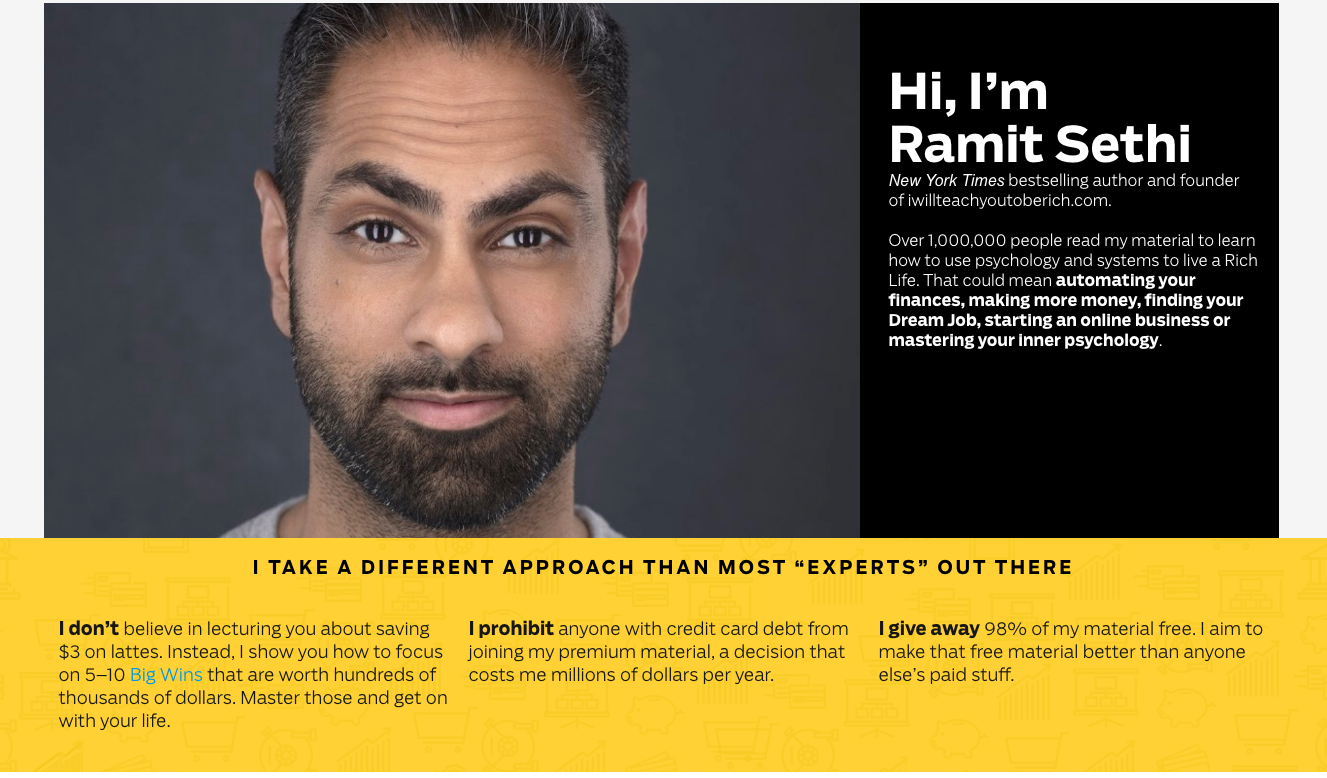
He does not offer any of his courses online, so even if you wanted to buy his courses, you can’t. First, he warms you up in an email sequence and provides a ton of valuable information for you up front – no strings attached. It’s only after a period of time that he will offer you the course. And it works. In one day alone he made $400,000!
21) Pay Attention to the Analytics
Analytics matter a lot. A content marketing campaign is actually dependent on statistics, as you’ll always want to optimize and eventually scale your efforts.
The reason why you should be looking at analytics is because you need to see where people are dropping off in your sales funnel. Unless there is a technical error with the site, you will want to A/B test the copy. You can even track it right in Google Analytics:

More often than not, you’ll find patterns and “winning” content, and soon enough you’ll know what works and what doesn’t so that you can double down on what does work.
Dive Deeper: How to Run A/B Tests that Actually Increase Conversions
22) Leverage Data to Optimize Your Content
Data collection is huge today. Every company is trying to acquire leads. Most will ask for your name, email, phone number, gender, favorite food, high school locker combination, etc., in order to create a description of you (called a buyer persona) and deliver the best possible products, services or advertisements for their audience.
Doing this will increase your sales because you won’t just be pushing products at everyone on the web; you’ll be able to target specific people with specific offers, making it more probable that you will get the sale.
And you should do exactly the same thing with your content: use the information your target audience shares with you to better satisfy their needs and problems.
Dive Deeper: How To Write Data-Driven Posts
23) Produce Both Evergreen and Trending Content
Both evergreen and trending content are worthy of your attention, but I prefer to focus 70% of my efforts on the evergreen subjects, while 30% goes to trending topics. Make no mistake – if there’s a hot topic in your space, write about it. Just ensure that you’re not churning out the same content that everyone else is by providing your own unique angle, statistics or research that your company has gathered, or writing truly 10x content about it:
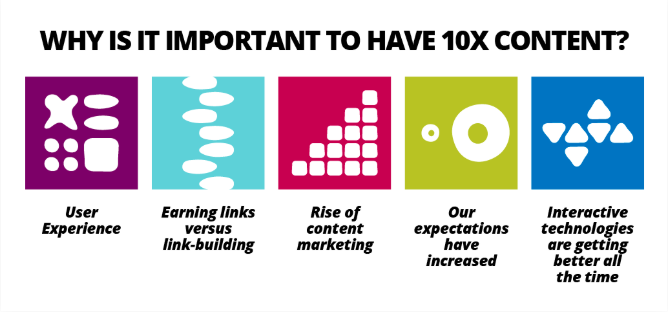
The benefit to writing about evergreen subjects is that you’ll be able to keep updating it every year or so and get a lot more mileage out of it with a lot less work.
Dive Deeper: Absolutely Everything You Need to Know About 10x Content
24) Use Conversational and Simple Language
Exceptional content is never complicated. Most people don’t get excited about reading a textbook, but they do get excited about having a conversation with a friend. Write with a conversational tone, not a monotone.
This is also a great opportunity for you to leverage your brand by creating a unique voice. If you’re a funky startup, you can “chat” with your readers and use casual jargon. If you’re an accounting firm, you’ll want to sound professional, but you can make the topic more palatable with cool examples and easy-to-understand language.
Dive Deeper: The Art of UX Storytelling: How to Create Your Brand’s Story
25) Engage with Your Prospects as Much as Possible
Think of it like a friendship. The more you talk, the stronger the relationship becomes. How frequently are you connecting with your prospects and customers? Once a week? Once a year?
Your content is a great tool that can serve you well in this regard. While writing articles, for example, or when recording videos, address your audience directly. Use the second person (“you,” “your”) and ask them a lot of questions. Encourage them to deliver their answers in the comments, through an email, or on your brand’s Facebook page (and be sure to respond quickly!).
Note: If you do ask for comments (as you should!) YouTube doesn’t like for you to actually say the words “leave a comment below” or make it otherwise obvious that you are asking them to comment. Instead make it more natural by saying something like “let me know what you think of…”
Dive Deeper: Here’s How Targeting Cold, Warm & Hot Traffic Builds Successful Customer Relationships
26) Offer Strong Calls-to-Action (CTAs)
CTAs are essential. People generally don’t do stuff unless you tell them to. So next time you want to them to like your social media page, ask them for a page like. When you need more subscribers, create a strong call-to-action that encourages sign-ups. The trick to an effective CTA button is to inform the user what’s in it for them:

Most people also don’t realize that you can A/B test your CTA. Here are a couple factors that will change the CTR of your CTA:
- Location
- Color
- Copy
- Value Prop
Here are some great examples of irresistible call-to-action ideas for your inspiration.
Dive Deeper: How To Create CTAs that Actually Cause Action
27) A/B Test
When in doubt, test it! The numbers never lie. As content marketers, this is often overlooked, though it is important to do. Here are a couple of things you can and should be A/B testing:
- Headlines/Title Tags
- Various Opt-ins and CTAs
- Content Formats
- Image Types
- Content Length

Google now offers a free A/B testing software, or you can use other paid tools, like Crazy Egg. Make sure that when you do A/B test, you give it ample time to have a full sample of data to look at and don’t change too many things at once.
Dive Deeper:
28) Understand Which Traffic Channels Are Worth It
Your content is usually not worth posting everywhere. For example, it might not be worth it for an e-commerce store that sells women’s shoes to be posting on Medium. Some traffic channels will be hard to leverage, so it’s much wiser to focus your energy on the platforms that bring increased results.
To get an idea as to where you should start, look at the channels that your competitors are using. If they are investing money into those channels, guess what? They work!
You need to test, test and test again. Figure out which channels work best for your brand/product and then double down on them.

Dive Deeper: 54 Alternative Ad Networks to Open Up New Channels of Growth in 2019
29) Use the 80/20 Rule to Optimize Your Content Marketing
Are you familiar with Pareto’s principle? Simply put, it states that 80% of the effects come from 20% of the causes.
Referring to content marketing, you should figure out which 20% of the content you’re creating generates 80% of your overall results. Remember that you can apply this to testing various mediums, testing blog post formats and even topic clusters. Once you know what that 20% is, put more of your focus and resources on it.
Then the 80% of your work should be promoting that 10x content.
Dive Deeper: Why Content Marketing Should Always Be 20% Creation and 80% Promotion
30) Keep Up with the Marketplace
The digital environment changes practically every day and the speed of progress is phenomenal. That is why it is so easy for online marketers to fall behind: they get stuck with something that used to work while ignoring the reality of a growing and changing market. As technology and techniques advance, the marketplace will inevitably fluctuate.
Your role as a content marketer is to pay attention to what’s going on and be one step ahead of your audience so that you can inform them. Figure out what the latest marketplace rules, trends, disasters, technologies and topics are and pay attention to them!
Dive Deeper: How AI Is Shaping the Future of Content Marketing and Personalization
Takeaway
Content marketing works. That’s why so many people are using it today. The key to ensure that it continues to work is by leveraging new and innovative tactics like setting clearer content marketing goals and A/B testing various content. Stepping away from the content mill and into a customer-focused strategy is how you will make content marketing work.







